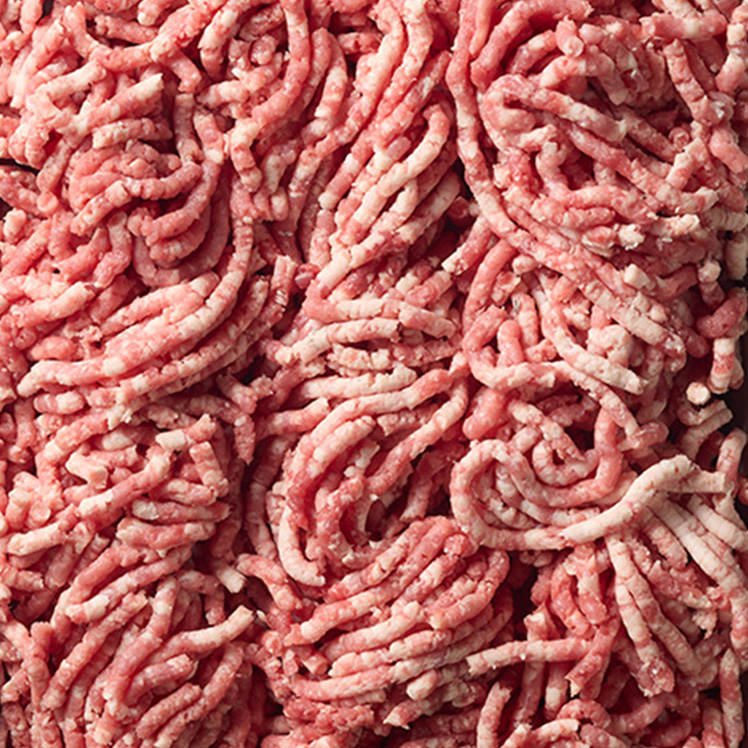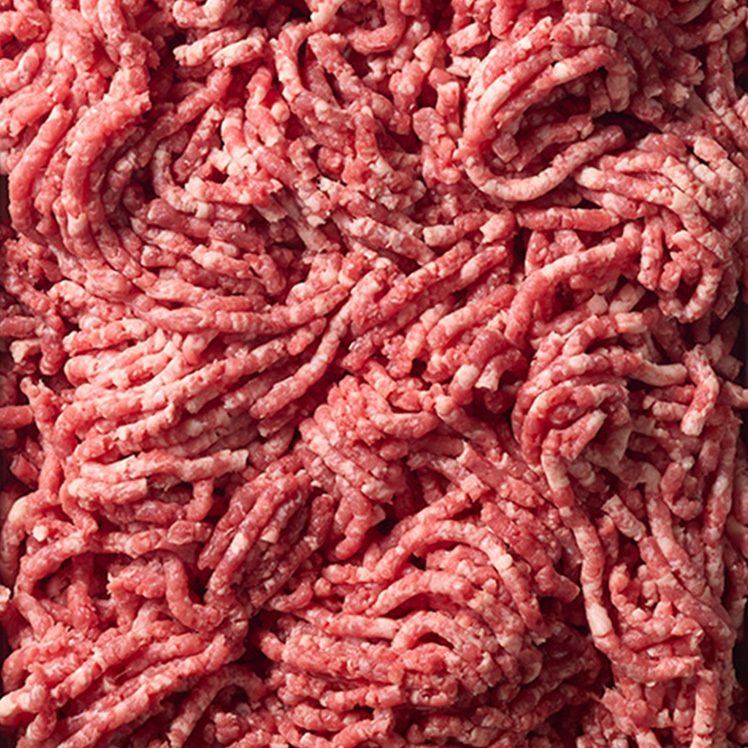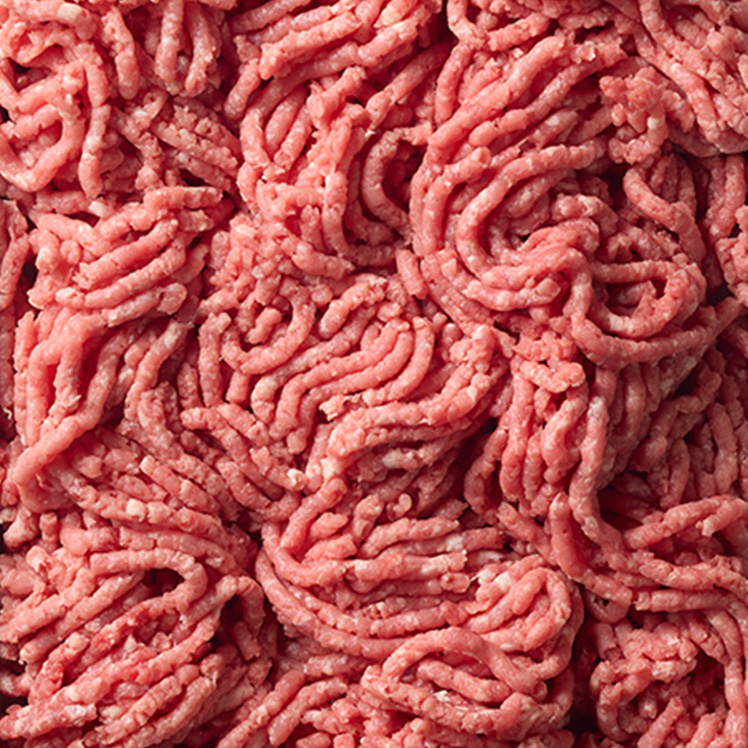Ground Beef
Due to its versatility and convenience, ground beef is the number one way consumers eat beef in the United States, representing approximately 60% of beef pounds sold today.* Premium beef grinds and blends have elevated menu expectations for consumers. However, not all ground beef is created equal.
*Certified Angus Beef (CAB)
Page contents:
Expert Tips | Lean Levels | Blends and Grinds | Packaging | Storage and Handling
Expert TipS
Using a gentle touch when mixing and shaping meatloaves and meatballs can prevent over-mixing, which can cause them to be firm and compact after cooking. Find more great tips like this from our Food Fanatics® chefs in the article below.
LEAN LEVELS
The quantity of lean vs. fat present in a given blend is known as the “lean-to-fat ratio”, with the first number representing the lean.
73/27 - 75/25
- Typically features high levels of juiciness and flavor
- Commonly used in applications involving crumbles: tacos, burritos, pizza toppings, etc.

80/20 - 85/15
- Balanced levels of juiciness, bind and flavor
- Often labeled as "lean"
- Commonly used in formed applications: burgers, meatloaf, meatballs, Salisbury steak, etc.

85/15 - 90/10
- Less beefy flavor and chewier texture
- Often labeled as "extra-lean"
- Commonly used in applications that include sauce: chili, meat sauces, lasagna, etc.

BLENDS AND GRINDS
Source Grind
The source grind typically indicates a specific subprimal (or muscle) as the raw material, such as chuck, round or sirloin. Below are grinds from different primals, subprimals and cuts, each with unique flavor and textural attributes, which can be highlighted through different applications and dishes.
Chuck Flap
A grind coming from the Chuck Flap may present with high marbling, resulting in tremendous flavor and juiciness.
Top Sirloin
As a leaner cut, a Top Sirloin grind still packs substantial flavor and juiciness for use in various dishes.
Brisket
Increased amounts of oleic acid give this on-trend beef grind an amazing taste, especially when used in popular craft burgers.
Signature Grind/Blend
Signature grinds and blends have gained popularity in recent years and highlight the use of non-traditional cuts, such as brisket and short ribs. These blends deliver distinct flavor profiles and are used for creating dishes that stand out in menus.
Signature blends can include:
- Butcher’s Blend
- Special Blends
- 4-way and 3-way Blends

Grind Size
The grind size indicates the particle size of the ground product and is determined by the size of the holes in the grinding plate used during the grinding process. The difference in grind sizes can affect the texture, juiciness and cooking properties of the ground beef.
| Fine Grind | Medium Grind | Coarse Grind |
|---|---|---|
 |
 |
 |
|
|
|
GROUND BEEF APPLICATION GUIDE
Use this diagram to understand key considerations when determining the appropriate bulk ground beef items to purchase for your operation's center-of-the-plate menu offerings. Whether you need beef crumbles for tacos and toppings, formed items like burgers and meatballs or grinds for chili, sauces or lasagna, you can use this guide to find the right styles for your dishes.
PACKAGING
Commercial bulk ground beef is available primarily in two formats: a cylindrical shape that is referred to as a “chub” and a vacuum-packed cube shape that is referred to as a “loaf.” Both formats are commonly available in 5- or 10-pound packages.
A ground beef loaf tends to be more compact than a chub, but there is no other significant difference in the packaging. It simply depends on the preference of the operator.

STORAGE AND HANDLING
Storage
- All ground meats should be stored on the coldest side of the cooler
- Avoid locations near the door to prevent spikes in temperature from the outside air
- Temperature spikes make the product vulnerable to microbial spoilage at a more rapid rate – and depending on the temperature of the air outside of the cooler, and how long the ground beef is exposed, can raise the temperature into the Danger Zone where pathogens survive and grow between 40°F and 140°F. See the COP Cooler Map for more information
- Operators should store items immediately upon delivery and inspection, in cold storage – or it may have an impact on the shelf life and quality of the product
Handling
- Operators should use a first-in, first-out rotation, so products dated with the earliest “Use By” date are in front, and the farthest dates are in the back
- Space allowing, operators should keep food in original boxes/containers to maintain lot code and “best/use by date” information
| Type of Product | Storage Temperatures | Storage Times (from date of production) |
|---|---|---|
| Fresh Ground Beef | Below 40°F and as close to 28°F as possible | 1 to 3 days |
| Fresh vacuum packaged (unopened) Ground Beef | Below 40°F and as close to 28°F as possible | Up to 14 days (check with supplier) |
| Frozen Ground Beef | 0°F or below | Up to 90 days |
| Refrigerated, cooked Ground Beef | Below 40°F | 2 to 3 days |
| Frozen, cooked Ground Beef | 0°F or below | Up to 90 days |


